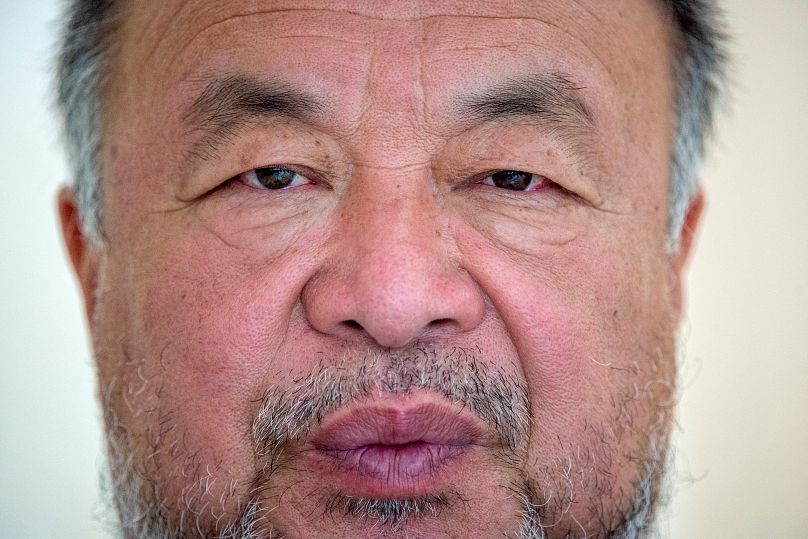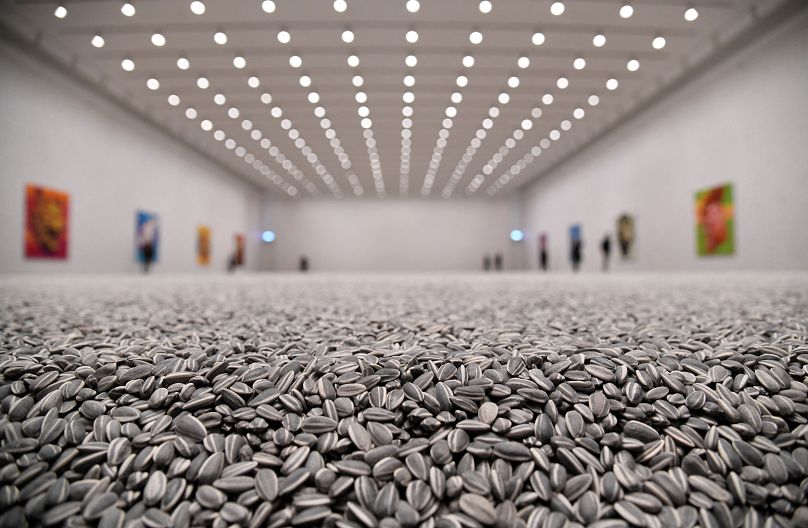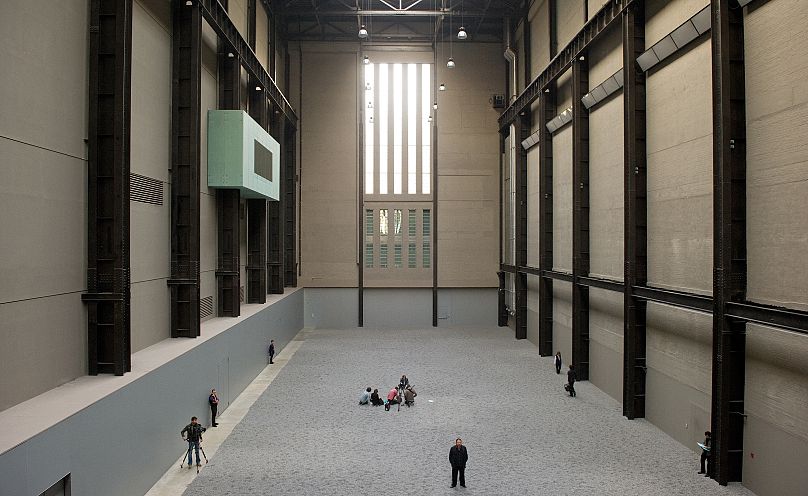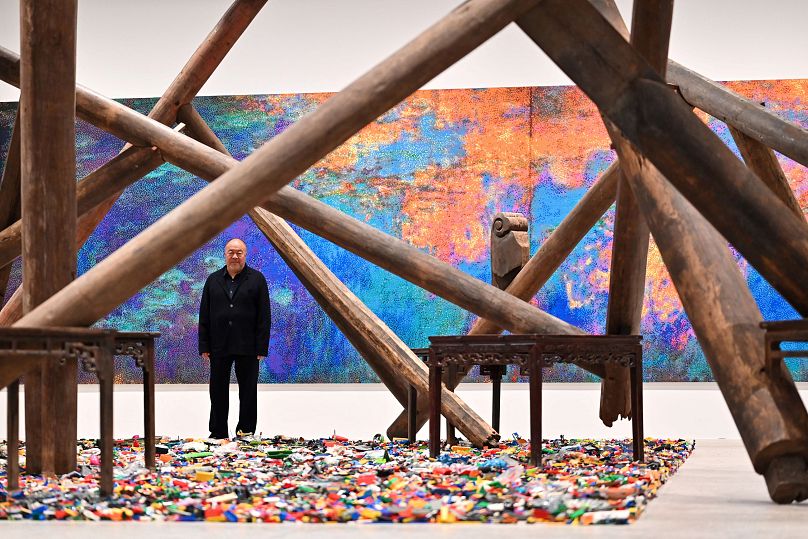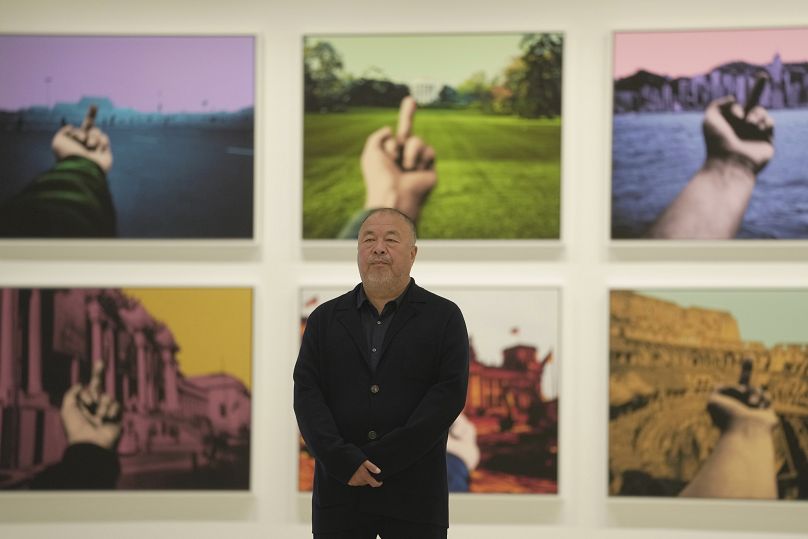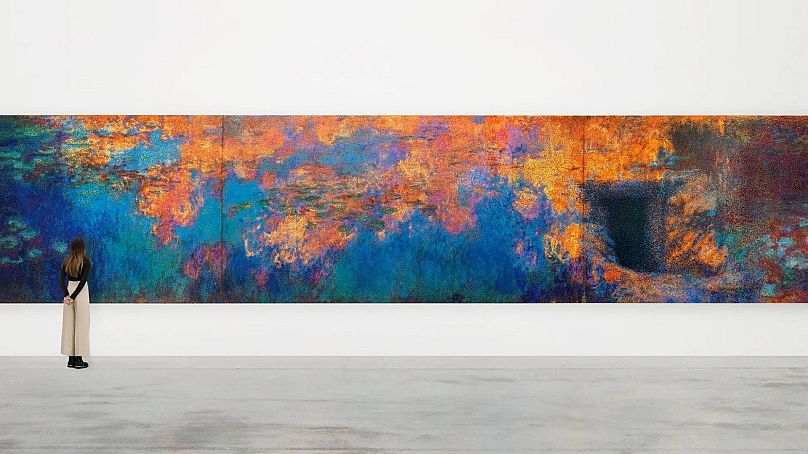Ai Weiwei, the celebrated Chinese artist and activist, is set to open his first exhibition focusing on design and architecture at the Design Museum in April.
Ai Weiwei, the celebrated Chinese artist and activist, is set to open his first exhibition focusing on design and architecture at the Design Museum in London on 6 April.
Titled "Making Sense," the exhibition will feature giant site-specific installations, including five expansive "fields" made up of hundreds of thousands of objects collected by the artist since the 1990s.
Among these impressive installations, visitors will have the chance to see Ai Weiwei's "Water Lilies #1", the largest-ever artwork made entirely from Lego.
Made from nearly 650,000 Lego bricks in 22 colours, the extraordinary piece is a recreation of one of Claude Monet's most famous paintings.
Who is Ai Weiwei?
Ai Weiwei has made a name for himself as an artist, architect, designer, filmmaker, and political activist.
Born in Beijing, China, in 1957, his father, Ai Qing, was a poet and one of China’s most famous modernist writers. Growing up, Ai Weiwei was exposed to art and literature from an early age, and it’s clear that he inherited his father’s artistic talent.
In the 1970s, Ai Weiwei moved to the United States and studied at the Parsons School of Design in New York City. He then went on to study at the Art Students League of New York, where he developed his skills as an artist.
In the 1980s, Ai Weiwei returned to China and began working as an artist and activist. He was a founding member of the avant-garde art movement in China, and he quickly made a name for himself as an outspoken critic of the Chinese government.
Throughout his career, Ai Weiwei has used his art to tackle important social and political issues, never being afraid to speak out against injustice, and his work has often been controversial.
One of Ai Weiwei’s most famous works is his installation, "Sunflower Seeds", which was exhibited at the Tate Modern in 2010. The piece consisted of 100 million porcelain sunflower seeds, each one hand-painted by Chinese artisans. The installation was a commentary on the mass-production of consumer goods in China and the loss of individuality that comes with it.
Ai Weiwei's "Study of Perspective" series is another one of his most recognisable and controversial projects. Created over the course of eight years (1995-2003), the series features photographs of the artist flipping the bird in front of several iconic landmarks worldwide, such as the White House, the Eiffel Tower, and Tiananmen Square. In capturing this provocative gesture using a snapshot aesthetic, Ai Weiwei offers a potent and straightforward message of political dissent.
In 2011, he was arrested by the Chinese government on charges of tax evasion, and he was held in detention for 81 days. The incident only served to increase his profile and bring attention to the human rights abuses in China.
Ai Weiwei’s art continues to inspire and challenge us to this day.
What to expect from the London Design Museum exhibition?
At the heart of the exhibition are a series of major site-specific installations.
Hundreds of thousands of objects are laid out on the floor of the gallery in a series of five expansive 'fields.'
These objects, from Stone Age tools to Lego bricks, have been collected together by Ai Weiwei since the 1990s and are the result of his ongoing fascination with artefacts and traditional craftsmanship.
For example, his piece "Still Life" features 1,600 tools dating from the late Stone Age, laid side-by-side, acting as a reminder that the origins of design are rooted in survival.
On the other hand, "Left Right Studio Material" consists of thousands of fragments of the remains of Ai's porcelain sculptures that were destroyed when his 'Left Right' studio in Beijing was demolished by the Chinese state in 2018.
The remains are a form of evidence of the repression that Ai has suffered at the hands of the Chinese government, as well as a testament to his ability to turn destruction into art.
Another fascinating work is "Spouts," featuring around 200,000 porcelain spouts from teapots and wine ewers crafted by hand during the Song dynasty. The quantity bears witness to the scale of porcelain production in China a thousand years ago.
Alongside these fields, dozens of objects and artworks from throughout Ai Weiwei's career explore the tensions between past and present, hand and machine, precious and worthless, construction, and destruction.
The exhibition also includes works that reference the Covid-19 pandemic, which exposed our dependence on humble things. On display are three toilet paper sculptures: two life-size rolls (one in marble and one in glass) as well as a 2-metre-long sculpture in marble, displayed for the first time.
The world's largest lego artwork
Undoubtedly, one of the main highlights of the exhibition is Ai Weiwei's "Water Lilies #1", which has been hailed as the largest Lego artwork in the world.
The piece is a stunning recreation of one of the most famous paintings by French Impressionist Claude Monet and challenges our preconceptions of reality and beauty.
Composed of nearly 650,000 Lego bricks in 22 different colours, the artwork stretches over 15 meters in length.
Justin McGuirk, Chief Curator at the Design Museum and the curator of Ai Weiwei: Making Sense, described the work as "monumental, complex and powerful", and expressed pride in being the first museum to exhibit it.
"Without a personal narrative, artistic narration loses its quality. In Water Lilies #1, I integrate Monet's Impressionist painting and concrete experiences of my father and me into a digitised and pixelated language," explains Ai Weiwei.
'Ai Weiwei: Making Sense" is open from 7 April to 30 July 2023 at the Design Museum in London.












